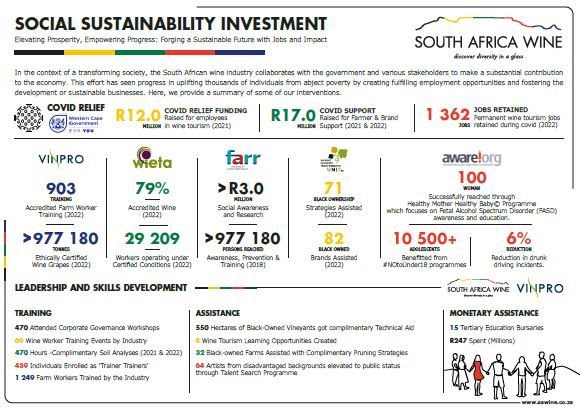As we step into the dynamic landscape of the wine industry in 2024, various challenges and opportunities unfold, reshaping the way producers, winemakers, and consumers interact with this beloved beverage. From health concerns to geopolitical disruptions and climate impacts to technological advancements, the wine world is undergoing a transformative journey that demands strategic adaptation and thoughtful consideration.

Rico Basson, CEO, South Africa Wine
1. The health debate
The World Health Organisation's persistent warnings about the perils of excessive alcohol consumption are echoing through vineyards and wine businesses worldwide. Consumers are heeding the call, opting for lower alcohol alternatives, or exploring diverse beverage choices.
The resulting impact on the wine trade is profound, forcing regulators to contemplate more stringent policies and taxes. In response, the industry must champion responsible drinking, promote low-alcohol alternatives, and diversify product offerings to align with evolving consumer preferences. It is also important that policy debates be based on sound empirical research.
2. Geopolitics, value chain disruptions
The global political landscape, marked by over 50% of the world's population undergoing elections in 2024, introduces an element of uncertainty. Coupled with geopolitical risks, the wine industry must be prepared for potential disruptions in supply chains, shipping, and local protectionist measures. Challenges faced by the Cape Town Port and power supply issues in South Africa demand urgent attention to safeguard competitiveness and maintain export momentum.
3. Impact of climate
The wine industry is grappling with the profound effects of climate change on global production. Shifts in weather patterns, including rainfall, frost, floods, droughts, and fires, disrupt the delicate balance of wine cultivation. South Africa, having experienced both overproduction and short supply, is investing in research projects across its regions to mitigate climate risks and ensure the necessary quantity and quality for consumer demand.
4. Consumer demand under pressure
Amid a challenging economic forecast in South Africa and globally, consumer demand remains under pressure. In response, the industry will continue its focused approach to repositioning and ensuring value growth across various price points while also being innovative with sustainable packaging and emphasising quality to withstand economic uncertainties.
5. Wine tourism growing
A bright spot in the industry is the exponential growth of wine tourism. South Africa's Winelands, renowned for its world-class offerings, are becoming a magnet for recurring visitors. This trend generates revenue for wineries and builds the country's image as a destination rich in beauty and experiences.
6. Sustainability and environmental practices
The push towards sustainability and environmental practices continues, with a particular emphasis on social responsibility. South Africa leads the charge in Fairtrade wine production, showcasing the sector's commitment to ethical trade and community well-being.
7. Technology advancement
Investments in technology to enhance efficiency, precision, and quality are set to persist in 2024. This tech-driven approach, coupled with a focus on attracting and retaining talent, promises to propel the industry forward in the face of evolving global demands.
8. Consolidation, inclusive growth, and re-investment
Acknowledging the decline in producers, wineries, and hectares over the past decade, the industry is witnessing a trend of consolidation and reinvestment. This is not merely a survival strategy but a vital step towards ensuring a sustainable future, fostering inclusive growth, and attracting much-needed investment.
The global wine industry stands at a crossroads where adaptation and innovation are not just choices but imperatives for survival. Navigating these trends requires a delicate dance between tradition and transformation as the wine world evolves to meet the demands of a dynamic and ever-changing landscape.



































































